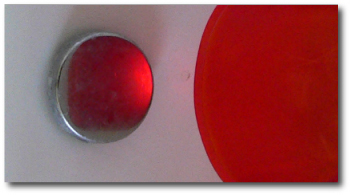
In June 2002, I saw Keith Horne give a review talk at the Scientific Frontiers in Research on Extrasolar Planets Meeting at the Carnegie Institute of Washington. He showed a slide (an updated version of which is here) that listed 23 planetary transit surveys that were in operation at that time. He had asked the investigators running each survey to send him the number of new transiting planets per month that could be expected to turn up. The grand total rang up to a whopping 191 fresh planets per month, or 2,292 planets per year.
For a number of reasons, those numbers haven’t quite panned out, but it nevertheless finally looks like we’re entering a phase where the planetary yield from wide-field transit surveys is starting to ramp up dramatically. Today’s astro-ph mailing has a paper by Collier Cameron et al. entitled “WASP-1b and WASP-2b: Two new transiting exoplanets detected with SuperWASP and SOPHIE”, describing the discovery of P=2.15 d and P=2.52 d planets transiting ~12th magnitude stars. As of this month, astronomers have been hauling in transits at a rate of one per week.
Dave Charbonneau at CfA dropped me an e-mail this morning:
Great chance to catch WASP-1 tonight from the western US. We will pursue it from Mt. Hopkins and Palomar, but thought you might want to give a heads up to transitsearch.org. This one is very much in need of a great light curve, as the current estimates of the planetary radius range from “smallish” to “huge”, with an error bar that is depressingly large.
He’s definitely right about all that. Multiple photometric data sets will be of considerable use in constraining the system parameters. It’s also going to be very important to get a better handle on the properties (Mass, Radius, and metallicity) of the WASP-1b and 2b parent stars. We’d really like to know how these two new planets fit into the overall trends that are starting to emerge among the aggregate of transiting planets.
Ephemerides for both of the WASPs have been added to the transitsearch.org candidates table, and the (rather meagre) published tables of radial velocity measurements have been added to the Systemic back-end. Given the short orbital periods, I don’t think it’ll be very long at all before small telescope observers start producing confirmation light curves.

Dan Klinglesmith of New Mexico Tech wrote me with the information that the WASP-1 and WASP-2 stars correspond to the known stars GSC 2265:107 and GSC 0522:1199:
Greg, I used Software Bisque’s THESKY version 6 to move to the J2000 coordinates given in your email. They pointed to the name GSC stars within a couple of arc seconds.
Wasp-1 GSC 2265:107 is listed as having J2000 coordinates of 00h 20m 40s and +31d 59m 24s with a magnitude of 11.5 (filter unknown) and no specral information.
Wasp-2 GSC 0522:1199 is listed as having J2000 coordinates of 20h 30m 14.72s and +06d 25m 46.81s with a magnitude of 11.69 (filter unknown) and no spectral magnitude. There is a B magnitude listed at 12.44.
Dr. Daniel A. Klinglesmith
Magadelna Ridge Observatory
New Mexico Tech
Out of interest, are the hot Jupiter planets expected to be significantly distorted from spherical from the gravitational pull of the star (e.g. close to filling the Roche lobe), and would such distortion be detectable in the transit light curve?
Andy-
Although very close stellar binaries significantly distort, planets are much less affected. (Although HD209458b’s transit radius is so large in Hydrogen absoprtion, that Roche lobe overflow is implied.) The tidal bulge on a hot Jupiter is “only” of order 100 km (compared with a radius of >50000 km).
The photometric effect is small. Seager & Hui 2002 and Barnes & Fortney 2003 find that you need photometric precision of about 1 in 10^-4 even to measure large oblateness. So, space-based ultra-high precision can do it, if its not swamped out by other signals.
Darin
Pingback: systemic - speculations